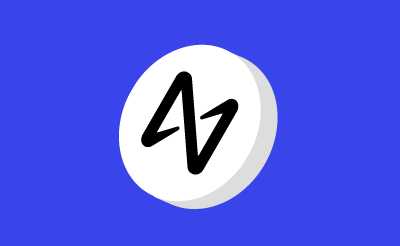EOS
EOS is a public blockchain platform that is built to accommodate developers of all levels with access to a configurable blockchain network
What is EOS?
- As a public blockchain platform, EOS provides support for apps developers to build applications on top of its network. Focusing on the users’ adoption and experience, EOS platform also supports development for a private chain.
- EOS adopted the Delegated Proof of Stake (DPoS) consensus mechanism to achieve relatively high throughput on its blockchain performance with 21 nodes (block producers) governing the network. The first block on EOS main net was produced back in June 2018.
- Block producers on the EOS network are chosen by EOS token holders. There are more than 100 nodes standby and available to be voted. Top 21 nodes voted by EOS token holders will govern the network -for 60 seconds- and receive rewards in form of EOS. Nodes need to maintain good behavior and support for the EOS ecosystem that benefited all token holders in order to sustain their position.
- EOS uses primarily C++ as their main programming language to build DApps on the platform including the smart contract.
Key Metrics
| Ticker | EOS |
| Token Name | EOS |
| Token Type/Protocol | EOS |
| Total Token Supply | Unlimited |
| Current Circulating Supply | See coinmarketcap |
| Market Capitalisation | See coinmarketcap |
| Token Creation Date | Jun 2018 (Main net) |
| Can it be mined? | No |
Who is behind EOS?
EOS is developed by a company called Block.one. It is a blockchain software company founded in 2018 with Brendan Blumer as their CEO. EOS researcher and inventor of the DPoS consensus mechanism, Dan Larimer also joined Block.one as CTO before leaving the company on Dec. 31st 2020.
What is the purpose of EOS?
EOS network was created with the purpose of facilitating developers including those who are not familiar with blockchain to be able to build scalable DApps that are configurable according to their needs. The use of DPoS consensus mechanism is aimed to limit the number of block verifiers to increase transaction speed within the network while still maintaining democracy by letting token holders to vote for nodes (delegates).
Insights
EOS token value is fundamentally driven by the performance of DApps built on their platform since the DApps users would need to use EOS as transaction fee. The increase in EOS circulating supply due to the node incentives mechanism should be less than the platform growth in order to maintain the value of EOS.
- EOS ICO was among the longest and most successful with not less than $4.1b raised.
- EOS adopted an inflationary token economic model at around 5% yearly to secure their network by maintaining incentives to their block producers.
- Around 850m EOS sold during the ICO. That accounts for 89% of the current EOS total circulating supply.
Risks
- The race to be the top public blockchain platform is just getting hotter year by year. Failure to quickly respond to the market needs might lead to a serious impact because DApps developers most of the time only need one platform.
- EOS block producers are voted by majority token holders, however, there’s no limit how many tokens a person could hold. Therefore, there’s a risk of network monopoly by large token holders especially considering the fact that some sources reported that 850m EOS sold during the ICO were only sold to around a few thousand investors.
News and Updates
- SB Northstar, Softbank subsidiary, has agreed to invest $75m on Bullish, a crypto exchange owned by Block.one. The rumour is spreading about Bullish’ intention to go public at a valuation of around $9b.
- Upland is the only DApps developed on the EOS platform that is in the top 100 DApps according to Dappradar.
- Block.one said that Bullish exchange will adopt EOS public blockchain network to provide transparency of all transactions on the exchanges. The move seemed purposefully to prove the ability of EOS network performance to attract developers to build on EOS. Beside that, they might also want to gather investors and crypto traders to trust the Bullish exchange. Some theory and speculation are going on around this topic at the moment.
Community & Whitepaper Links:
- Official Website: https://eos.io
- White Paper: https://github.com/EOSIO/Documentation/blob/master/TechnicalWhitePaper.md
- Telegram: https://steemit.com/eos/@eosnewyork/join-the-eos-community-telegram-channel-resource-list
Disclaimer:
All investment is speculative and involves substantial risk and uncertainty. Investors should understand the nature of digital assets including the terms of return and the risk of assets. We encourage investors to fully understand the assets and the risk associated with them prior to making any investment.



